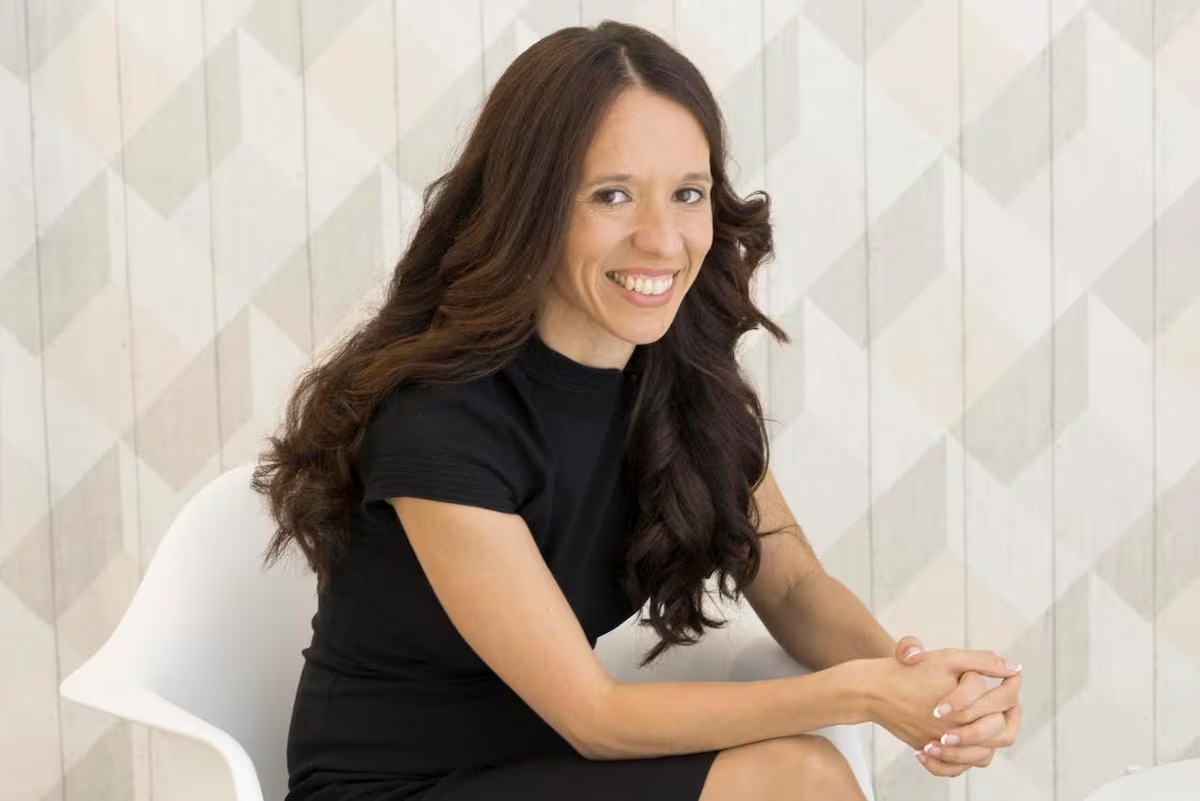
Children who attend Montessori classrooms are more independent and determined children, this is what the study concludes A national randomized controlled trial on the impact of public Montessori preschool education at the end of early childhood education, published last October in Proceedings of the National Academy of Sciences, one of the most cited scientific journals in the world. “The data obtained justify at least a more in-depth study of Montessori education in the country and suggest that expanding access to Montessori programs (…) may be a fruitful way to maintain early learning outcomes at least until the end of kindergarten, while having a positive impact on skills such as executive functions and social understanding,” says the research, the first conducted in public Montessori nurseries in the United States.
The authors followed 588 children (ages 3 to 6) from 24 public Montessori schools and their results show improved outcomes at the end of early childhood in reading, short-term memory, executive functions and social understanding. Moreover, according to their conclusions, These preschool programs not only provide better early learning for children, but “also result in a lower cost to school districts and taxpayers.”
“The research gives great support to this pedagogy because contrary to what the biggest myths say, which are an elitist pedagogy, it explains that American schools that apply these programs save 13,000 dollars (11,234.60 euros) per child”, Miriam Escacena García (Madrid, 46 years old), Montessori teacher-guide and Positive Discipline facilitator certified by the International Association of Positive Disciplines of the States Uniti, which allows it to provide training on these methodologies. According to the study, “public Montessori education, ages 3 to 6, costs districts $13,127 less per child than traditional programs, primarily due to a higher ratio of children per teacher in early childhood classrooms.”
For Escacena, who trains public school teachers in Madrid and other Autonomous Communities as a consultant and teacher advisor for the educational transformation of the public center, this research is also consistent because this pedagogy does not use textbooks and uses less consumable materials – paper, pens, paper clips, staples, folders, ink and toner cartridges… –: “Yes, we use objects that can be manipulated, but they are made of wood or sandpaper, they don’t have batteries, they don’t have lights, they never break and “They last for many years.” “Although I am aware that there have always been very polarized opinions on this method, from that it is for the rich, within the reach of very few, to even that it is hippies because children do what they want, there are no limits, there are no rules, etc.”, explains the founder of Your Montessori Guide, a training, consultancy and personalized consultancy platform aimed at families, teachers, professionals and educational institutions.
She is also the organizer and founder of the International Montessori Congress, which will celebrate its seventh edition in 2026 and is onlineengineer by profession and author of the book Communication with children. my little hands speak (Cuatro Foglio, 2020) underlines that Montessori is not a trend that has just arrived, but rather has more than 100 years of history and results all over the world: “There are more than 25,000 schools in the world that function perfectly”.
ASK. Are there really no rules in the Montessori method?
ANSWER. No rules as such, this pedagogy is based on freedom and respect. Respect for the child’s needs at every stage of development. And in freedom because in the traditional system in which we were educated, most of us minors sit at the desk without being able to move, following guided exercises that the teachers give them and a rigid timetable. And it is not necessary to be so rigorous because if we understand the needs of each minor well at each stage, everything can be much simpler and more flexible.
Q. What would be the most obvious differences between traditional school and this pedagogy?
R. There are many of them. It should be remembered that Maria Montessori was a pedagogue, but also a doctor, an anthropologist, a biologist, a philosopher, a psychiatrist, and through all this training she knew perfectly the needs of each stage of the child’s development. So Montessori children, in general, are very precocious, they learn to read earlier, they relate better and, above all, they learn a lot on their own. For example, when I go to schools to give teachers courses, they often tell me that the big problem they have is that young children arrive with very little autonomy: they don’t even know how to lower their trousers to go to the bathroom. Minors are super dependent and come to school and can’t do things on their own, and this really creates a big headache for teachers, educators who don’t dare face families and tell them how important it is for their child to know how to take care of himself. On the other hand, Montessori children are more autonomous, they can hang up their coat, prepare breakfast in class, even cut fruit, put the baby on… And on an emotional level they have much more emotional intelligence, for example.
Q. Is it the parents’ fault? Are you saying this?
R. No, not at all. I think we’re having a very serious problem in society. I think we parents are so stressed, putting so many hours into work that we spent at home more caring than educating, leaving all the responsibility for this to the school. And it’s a serious mistake. What’s happening? That we have a super overprotective attitude because of the guilt we feel about not spending enough quality time with our kids, so we keep dressing them, picking out clothes, packing lunch, doing everything for them.
Q. So what benefits does Montessori bring to families?
R. As far as I’m concerned, for example, I have two children who have had the opportunity to attend a Montessori school, I must say that they are quite independent, compared to the other children I see. I also never look at their schedule to see if they have homework, if they have to study for an exam and so on, I trust them. And if they don’t, the bad grade will come and they will wake up. Because if we are always overprotective, in the end we don’t allow them to grow. And I think this is one of the biggest mistakes we are making as parents.
Q. And the benefits for teachers?
R. When a teacher can go to the bathroom calmly, without fear, without panicking, about what the students will do in class because he can trust them, then things change. It changes from day to day and this, in the end, has benefits in the classroom routine, in the acquisition of learning and in school life itself, even in the courtyard or in other activities. Trust is key. Furthermore, the US study explains that because teachers work more comfortably, they stay in Montessori schools longer.
Q. How important is age in the Montessori method?
R. In Montessori, children are not organized by year of birth, but multi-age groups are created. For example, in Early Childhood Education, children aged 3 to 6 are together in the same class. This may seem crazy and make us go crazy before we know what it is, but it actually has many benefits. And they have them because in a 3 to 6 year old environment, little kids who come in at 3 years old already see that their 5 year old peers are reading, so the interest is much greater. They know there is a code to crack and this pushes them to learn from each other. Like life itself: when a child goes to the park and starts playing with another, he doesn’t ask him what year he was born, because here it’s the same. It’s not that different and it can be done. We must commit ourselves because in the end the benefits are very good for everyone, both for the children, for the teachers, and for the families. Let’s team up.
Q. And how does the classroom itself differ from that of traditional school?
R. Well, in terms of furniture, the most notable thing is that instead of having large closed cupboards with all the materials only within reach of the teacher, they are replaced by low shelves at the children’s height with manipulative materials that they can choose themselves. It’s about changing the perspective, giving that confidence so that the minor can choose the topics that interest him or her most to learn at any time, obviously under supervision. And then the materials are purchased little by little, always with the help of families, with the cooperatives that arise in many schools and which compensate financially. And obviously, even if Maria Montessori spoke of 40 children in the class, it is better if we have 20 or 25 boys and girls per class.
Q. Is Montessori for everyone?
R. Yes, it is a method that works for all types of children, while traditional education is a very standardized education in which there are students who do not adapt and fail, potentially leading to dropping out of school. Montessori personalizes each child’s needs much more. I have seen many families with children with special educational needs – autism spectrum disorder, ADHD and so on – who, after changing schools numerous times, have arrived at a school with this pedagogy and seen the light. I have also seen children with ASD who have self-harmed, who have banged their heads against the wall and so on, who have come to an environment with this method and have calmed down, have been able to regulate themselves. And this didn’t happen in a traditional classroom because you weren’t allowed to get up from your chair. Something as simple as getting up and walking freely around the classroom helped them self-regulate.





